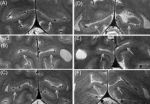(Press-News.org) This release is available in Spanish.
WASHINGTON--Studies by a U.S. Department of Agriculture (USDA) scientist and cooperators have confirmed what many pollen-sensitive people already suspected: In some parts of North America, ragweed season now lasts longer and ends later.
Ragweed pollen in some parts of the northern United States and Canada now lingers almost a month longer than it did in 1995, and these increases are correlated to seasonal warming shifts linked to climate change dynamics in the higher latitudes, according to a study published Monday in the Proceedings of the National Academy of Sciences.
"One of the biggest challenges in studying climate change is finding out how the plant kingdom is adapting to increases in air temperature and other meteorological phenomena," said Agricultural Research Service (ARS) Administrator Edward B. Knipling. "Studies like this also show us that these ecological shifts don't stop at crop production. They can also have a significant impact on public health."
ARS is USDA's principal intramural scientific research agency, and this research supports the USDA priority of responding to climate change.
Assessments by the Intergovernmental Panel on Climate Change suggest that current and future increases in land-surface temperatures are more likely to occur at higher elevations and at higher latitudes. But definitive studies correlating warming temperatures, longer growing seasons, and increased plant pollination have been lacking.
Lewis Ziska, a plant physiologist with the ARS Crop Systems and Global Change Research Unit in Beltsville, Md., led a scientific team that identified 10 locations that had at least 15 years of data, from 1995 to 2009, on local ragweed pollen counts. These locations were along a north-south transect from Austin, Texas, to Saskatoon, Canada. The researchers compared the pollen data at each site to other site data, including latitude, the number of frost-free days, and delays in the onset of the first fall frost.
The researchers found that from 1995 to 2009, the number of frost-free days at higher-latitude study sites had increased, and so had the length of the ragweed pollen season. During that period, the pollen season lasted from 13 to 27 days longer than in 1995. They also found that a longer ragweed pollen season was strongly correlated with a delay in the onset of the first fall frost.
###
Other collaborators included researchers from the Natural Resources Defense Council; the University of Massachusetts at Amherst.; the Allergy and Asthma Care Center in Fargo, N.D.; Allergy & Asthma Specialists in Minneapolis, Minn.; the Oklahoma Allergy and Asthma Clinic in Oklahoma City, Okla.; the Asthma and Allergy Center in Omaha, Neb.; the Hedberg Allergy and Asthma Center in Rogers, Ark.; Children's Mercy Hospitals and Clinics in Kansas City, Mo.; the Allergy, Asthma, and Immunology Clinic of Georgetown in Georgetown, Texas.; Allergy Associates of La Crosse, Wis.; the University of Wisconsin-Madison; Aerobiology Research Laboratories in Ontario, Canada; Rutgers University; and HealthEast Care System in St. Paul, Minn.
USDA is an equal opportunity provider, employer and lender. To file a complaint of discrimination, write: USDA, Director, Office of Civil Rights, 1400 Independence Ave., S.W., Washington, D.C. 20250-9410 or call (800) 795-3272 (voice), or (202) 720-6382 (TDD).
USDA study confirms links between longer ragweed season and climate change
2011-02-24
ELSE PRESS RELEASES FROM THIS DATE:
A nano-solution to global water problem: Nanomembranes could filter bacteria
2011-02-24
BUFFALO, N.Y. -- New nanomaterials research from the University at Buffalo could lead to new solutions for an age-old public health problem: how to separate bacteria from drinking water.
To the naked eye, both water molecules and germs are invisible -- objects so tiny they are measured by the nanometer, a unit of length about 100,000 times thinner than the width of a human hair.
But at the microscopic level, the two actually differ greatly in size. A single water molecule is less than a nanometer wide, while some of the most diminutive bacteria are a couple hundred.
Working ...
The blind also have a Stripe of Gennari
2011-02-24
This release is available in German.
The Stripe of Gennari develops even in those who are blind from birth and does not degenerate, despite a lack of visual input. This was discovered by Robert Trampel and colleagues from the Max Planck Institute for Human Cognitive and Brain Sciences using magnetic resonance imaging. This bundle of nerve fibers, which is approximately 0.3 mm thick, is not exclusively responsible for optic information. In the blind, it might play a greater role in processing tactile stimuli. This could contribute to an enhanced sense of touch and support ...
Feb. 23 NASA mission to tote $28 million CU-Boulder instrument and tiny student satellite
2011-02-24
A $28 million University of Colorado Boulder instrument developed to study changes in the sun's brightness and its impact on Earth's climate is one of two primary payloads on NASA's Glory mission set to launch from Vandenberg Air Force Base in California on Feb. 23.
Designed and built by a team from CU-Boulder's Laboratory for Atmospheric and Space Physics, the instrument called the Total Irradiance Monitor, or TIM, will point directly toward the sun to measure both short- and long-term fluctuations in the sun's energy output as it reaches the top of Earth's atmosphere. ...
Study suggests gender does not play a role in risk of death from heart attack
2011-02-24
ANN ARBOR, Mich. – A study led by the University of Michigan Cardiovascular Center shows being a woman may not increase your risk of dying from treatment for a severe heart attack.
U-M researchers and colleagues in the Michigan Cardiovascular Consortium found women who received treatment such as an angioplasty had higher unadjusted in-hospital heart attack deaths.
But these differences appear to be related to women's ages and additional health problems – not gender, says study lead author Elizabeth Jackson, M.D., M.P.H., an assistant professor of internal medicine ...
Nanoparticles increase survival after blood loss
2011-02-24
February 22, 2011 — (BRONX, NY) — In an advance that could improve battlefield and trauma care, scientists at Albert Einstein College of Medicine of Yeshiva University have used tiny particles called nanoparticles to improve survival after life-threatening blood loss. Nanoparticles containing nitric oxide (NO) were infused into the bloodstream of hamsters, where they helped maintain blood circulation and protect vital organs. The research was reported in the February 21 online edition of the journal Resuscitation.
"The new nanomedicine was developed to address the need ...
E-health must be a priority, researchers say
2011-02-24
An electronic health record system should be the backbone of health care reform in Canada and more must be done to speed up the implementation of this initiative across the country. Furthermore for this system to be put in place effectively, doctors and front line health care workers and administrators must be encouraged to play a more active role. These are the findings of an innovative new study assessing the effectiveness Canada Health Infoway's e-health plan. The study, which was conducted by scientists at the Research Institute of the McGill University Health Centre ...
Gender gap: Selection bias snubs scholarly achievements of female scientists
2011-02-24
Women scientists must confront sexism when competing for awards that recognize their research, according to a new analysis.
Research funded by the National Science Foundation and sponsored by the Association for Women in Science found that female scientists win service or teaching awards in proportion to the number of women in the PhD pool for their discipline, says sociologist Anne Lincoln at Southern Methodist University in Dallas. That's not the case, however, for awards for their research, says Lincoln, one of three authors on the research, which was reported in Nature.
The ...
MIT engineers design new nanoparticle that could lead to vaccines for HIV, malaria, other diseases
2011-02-24
CAMBRIDGE, Mass.- MIT engineers have designed a new type of nanoparticle that could safely and effectively deliver vaccines for diseases such as HIV and malaria.
The new particles, described in the Feb. 20 issue of Nature Materials, consist of concentric fatty spheres that can carry synthetic versions of proteins normally produced by viruses. These synthetic particles elicit a strong immune response — comparable to that produced by live virus vaccines — but should be much safer, says Darrell Irvine, author of the paper and an associate professor of materials science ...
Babies and toddlers can suffer mental illness, seldom get treatment
2011-02-24
WASHINGTON -- Infants and toddlers can suffer serious mental health disorders, yet they are unlikely to receive treatment that could prevent lasting developmental problems, according to research published by the American Psychological Association.
One barrier to mental health care for young children is "the pervasive, but mistaken, impression that young children do not develop mental health problems and are immune to the effects of early adversity and trauma because they are inherently resilient and 'grow out of' behavioral problems and emotional difficulties," according ...
Even in a crowd, you remain unique, UCLA life scientists report
2011-02-24
It may seem paradoxical, but being part of a crowd is what makes you unique, according to UCLA life scientists.
Biologists Kimberly Pollard and Daniel Blumstein examined the evolution of individuality —personal uniqueness — by recording alarm-call vocalizations in eight species of rodents that live in social groups of various sizes. They found that the size of the groups strongly predicted the individual uniqueness in the animals' voices: The bigger the group, the more unique each animal's voice typically was and the easier it was to tell individuals apart.
Their ...

